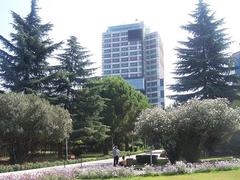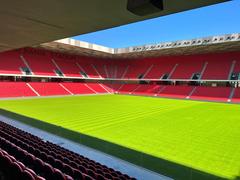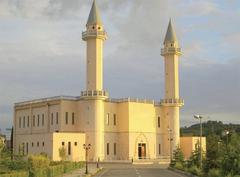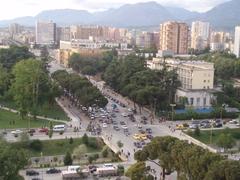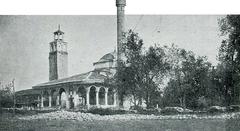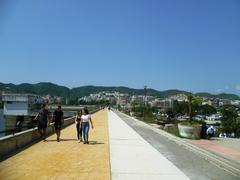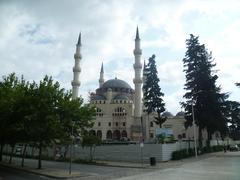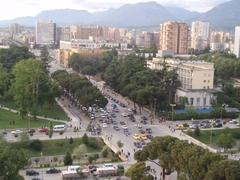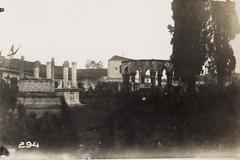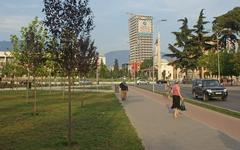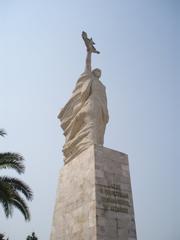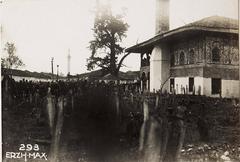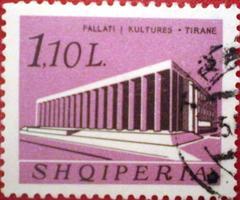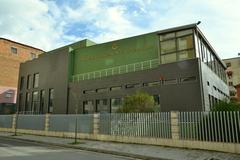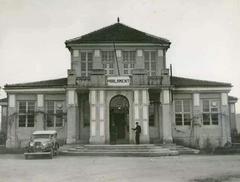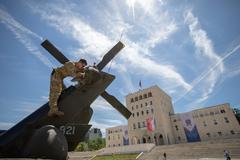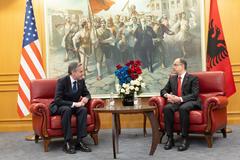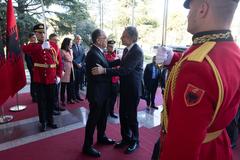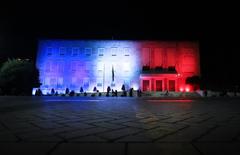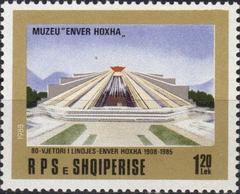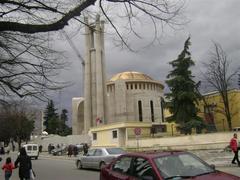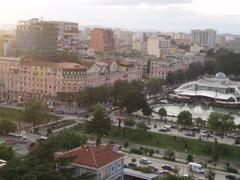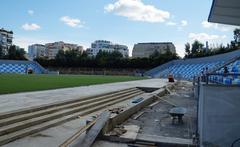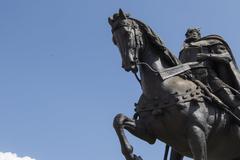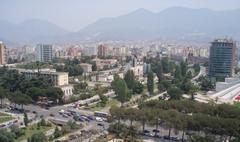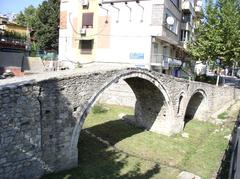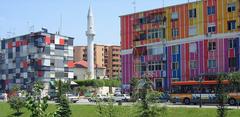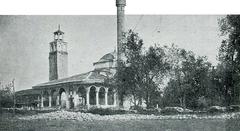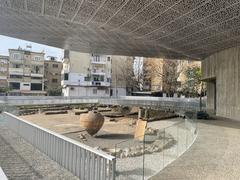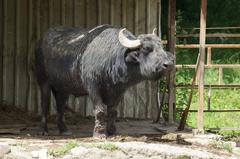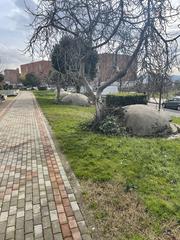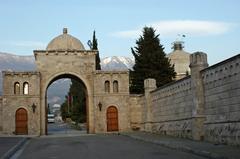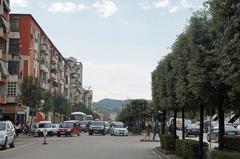
Apostolic Nunciature to Albania in Tirana: Visiting Hours, Tickets, and Visitor Information
Date: 04/07/2025
Introduction
The Apostolic Nunciature to Albania in Tirana stands as a testament to the deep-rooted diplomatic and spiritual relationship between Albania and the Holy See. Since its establishment in the early 20th century, the Nunciature has played a vital role in shaping religious freedom, fostering interfaith dialogue, and supporting Albania’s post-communist democratic development. Situated in the heart of Tirana, the Nunciature is not only a center of Vatican diplomacy but also a significant cultural landmark, reflecting the nation’s celebrated religious diversity and resilience (Apostolic Nunciature to Albania: History, Visiting Information, and Cultural Significance).
Although the Nunciature itself is not open to the public without prior appointment, understanding its historical role, visiting protocols, and the rich array of nearby attractions enhances any journey to Tirana. This guide provides detailed insights into the Nunciature’s significance, practical visitor information, and tips for exploring the surrounding cultural heritage (Visiting the Apostolic Nunciature to Albania in Tirana: Location, Access, and Visitor Information; Visiting the Apostolic Nunciature to Albania: Hours, Tickets, and Nearby Historical Sites in Tirana).
Table of Contents
- Historical Background and Significance
- Functions and Roles of the Apostolic Nunciature
- Visiting Information
- Consular and Pastoral Services
- Nearby Historical and Cultural Attractions
- Tips for Visitors
- FAQs
- Conclusion and Key Takeaways
- References
Historical Background and Significance
Early Foundations and Diplomatic Origins
The Apostolic Nunciature to Albania traces its origins to 1920, when Pope Benedict XV established the Apostolic Delegation, signaling the Vatican’s commitment to the newly independent Albanian state. This early engagement aimed to support the local Catholic community and nurture ties with Albanian authorities, especially through the work of the first Apostolic Delegate, Ernesto Cozzi, who was pivotal in consolidating the Catholic presence during a formative period for the nation.
Albania and the Holy See: Historical Context
Albania’s relationship with the Holy See stretches back to the Middle Ages, highlighted by figures such as Skanderbeg, championed by Pope Pius II, and Pope Clement XI, who was of Albanian descent. The 20th century brought significant challenges, particularly during the communist era when religious activity was suppressed, and diplomatic relations with the Vatican were severed.
Post-Communist Revival and the Modern Nunciature
Following the collapse of communism, diplomatic ties were fully restored in 1991 under Pope John Paul II. The Apostolic Delegation was elevated to a Nunciature, reaffirming the Vatican’s support for Albania’s religious freedom, democratic aspirations, and interfaith harmony.
Functions and Roles of the Apostolic Nunciature
The Apostolic Nunciature in Tirana operates as the Vatican’s official diplomatic mission, led by an Apostolic Nuncio with ambassadorial status. Key responsibilities include:
- Acting as the Pope’s representative to the Albanian government and Catholic hierarchy
- Promoting interfaith dialogue and humanitarian cooperation
- Supporting local Catholic initiatives and charitable organizations
- Facilitating papal visits and official delegation meetings
Throughout its history, notable Nuncios such as Ernesto Cozzi, Ivan Dias, John Bulaitis, and Archbishop Charles John Brown have strengthened the relationship between Albania and the Holy See through their diplomatic, pastoral, and humanitarian efforts.
Visiting Information
Location, Contact, and Accessibility
Address: Rruga e Durrësit, nr. 13, Tirana, Albania
Phone: (+355) 42 233 516
Fax: (+355) 42 232 001
Email: Available via embassy directories or upon request (evisa-europe.com)
The Nunciature’s central location places it close to Skanderbeg Square, government ministries, and many of Tirana’s historical sites (mapcarta.com).
Visiting Hours and Entry Protocols
- Public Access: The Nunciature is not open for casual visits or public tours.
- Appointments: Entry is strictly by prior appointment for official business, consular matters, or special events.
- Office Hours: Monday to Friday, 9:00 AM – 5:00 PM (subject to change on public or Catholic holidays).
- Entry Requirements: Visitors must present valid ID and may undergo security screening. Photography inside is prohibited.
Security, Etiquette, and Language
- Security: Expect standard diplomatic security protocols.
- Dress Code: Conservative or formal attire is required for appointments; modest dress is advised when attending religious events.
- Language: Italian and Albanian are commonly spoken; English is widely used for official matters. Basic Albanian greetings are appreciated (visit-tirana.com).
Consular and Pastoral Services
The Nunciature provides limited consular and ecclesiastical services:
- Guidance on Vatican City travel visas
- Authentication of church-related documents
- Pastoral support and connections to local parishes
Visa services for entry to Albania are managed by Albanian authorities.
Nearby Historical and Cultural Attractions
While the Nunciature is not a tourist site, its location is ideal for exploring Tirana’s landmarks:
- Skanderbeg Square: The city’s main plaza with monuments and museums
- Et’hem Bey Mosque: An 18th-century architectural gem
- National History Museum: Chronicling Albania’s journey from antiquity to modern times
- Orthodox Cathedral of the Resurrection: A symbol of religious revival
- Bunk’Art 2: A museum highlighting Albania’s communist era
- Grand Park of Tirana: A tranquil urban green space
Nearby, visitors can also enjoy the Blloku district, famous for its lively cafés and nightlife, and the New Bazaar for local crafts and cuisine (Matias Travel; Salt in Our Hair).
Tips for Visitors
- Transportation: Central Tirana is walkable; taxis are affordable, and bus routes serve Rruga e Durrësit.
- Cash: Carry Albanian lek for small purchases; most venues are cash-based.
- Safety: Tirana is generally safe, but use standard precautions (wander-lush.org).
- Accessibility: Contact the Nunciature in advance if you have mobility needs; older buildings may have limitations.
- Local Etiquette: Greet staff respectfully; “Miredita” means “Good Day,” and “Faleminderit” means “Thank you.”
FAQs
Q: Can I visit the Nunciature without an appointment?
A: No, visits are strictly by appointment due to diplomatic security.
Q: Are there entrance fees or tickets?
A: No; the Nunciature is not a ticketed tourist attraction.
Q: What languages are used?
A: Italian, Albanian, and English are spoken by staff.
Q: Is the Nunciature accessible for people with disabilities?
A: Accessibility is limited; contact ahead for arrangements.
Q: Does the Nunciature process visas for Albania?
A: No, it only handles matters related to the Vatican City.
Q: Is photography permitted?
A: No, photography inside is prohibited.
Conclusion and Key Takeaways
The Apostolic Nunciature to Albania in Tirana is a distinguished symbol of the enduring spiritual and diplomatic partnership between Albania and the Holy See. While not open for general tourism, its presence enriches Tirana’s cultural landscape and underscores the nation’s commitment to religious pluralism and interfaith harmony. Planning a visit to the area around the Nunciature—exploring Skanderbeg Square, historic mosques, and museums—offers a comprehensive view of Albania’s vibrant heritage.
For updated information on visiting protocols, special events, or cultural experiences, consult official embassy directories and local tourism resources. Enhance your stay by downloading the Audiala app for real-time guides and exclusive content, and follow us on social media for the latest updates.
References
- Apostolic Nunciature to Albania: History, Visiting Information, and Cultural Significance
- Visiting the Apostolic Nunciature to Albania in Tirana: Location, Access, and Visitor Information
- Visiting the Apostolic Nunciature to Albania: Hours, Tickets, and Nearby Historical Sites in Tirana

